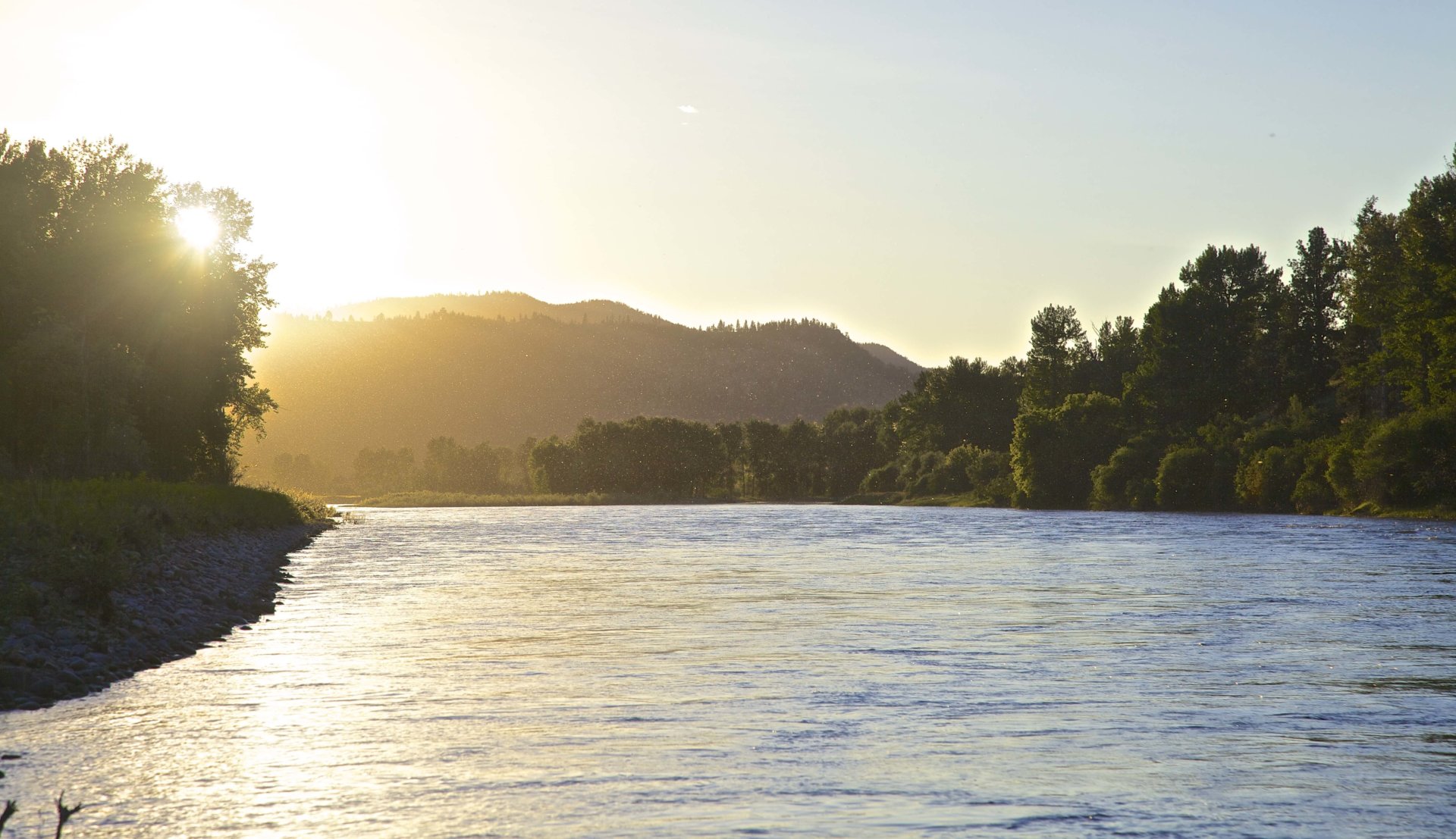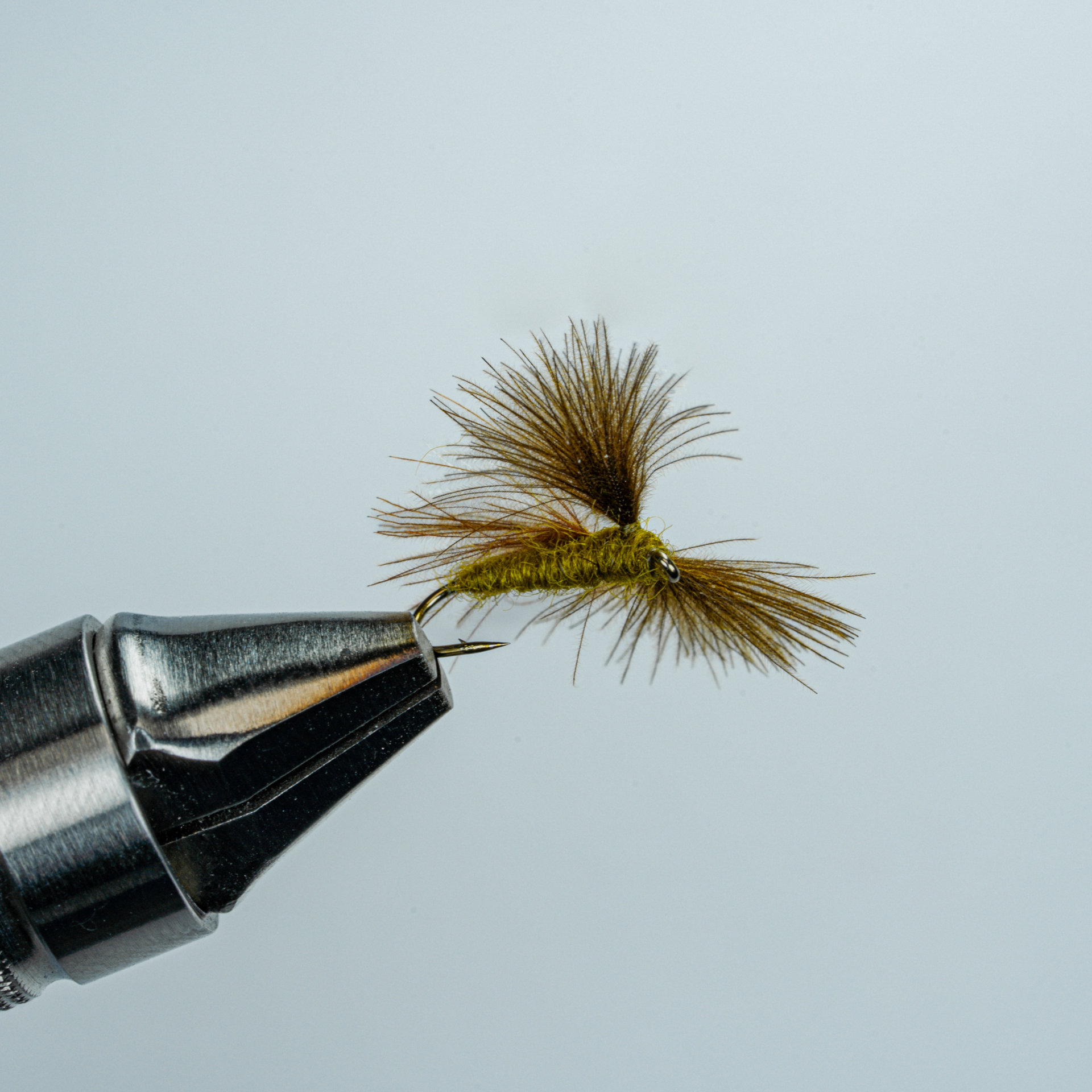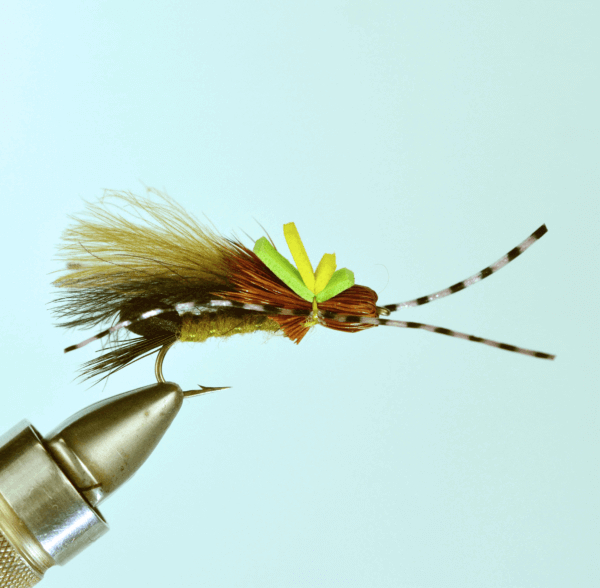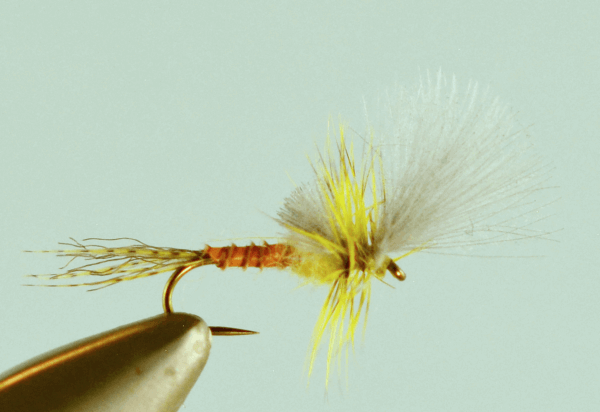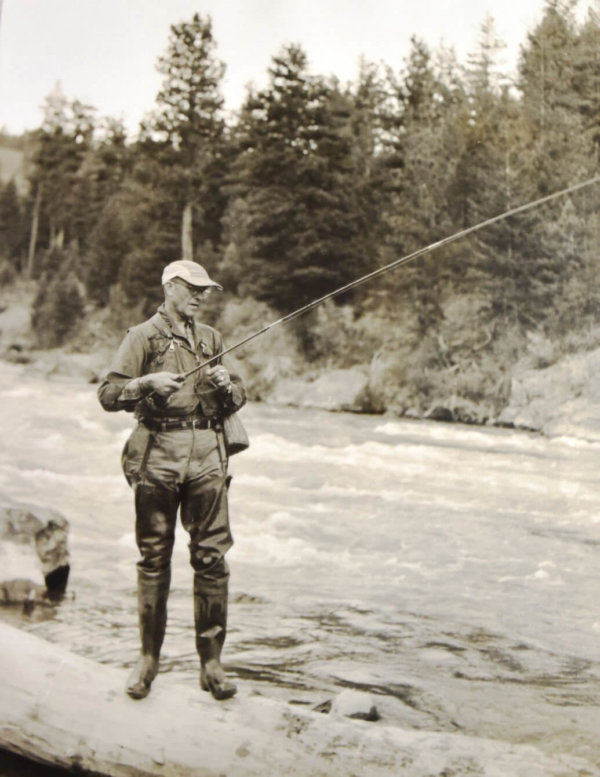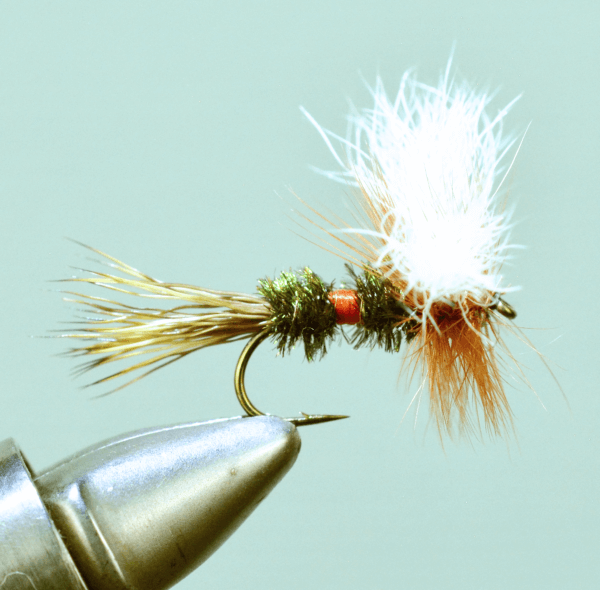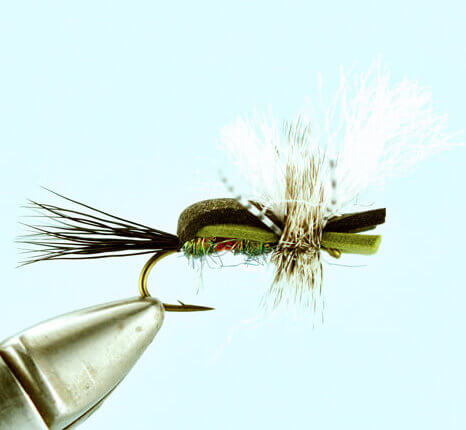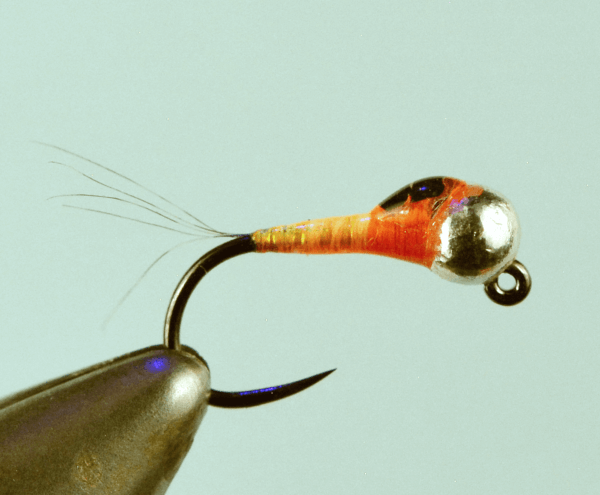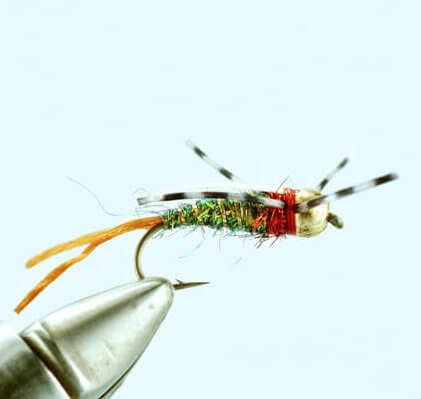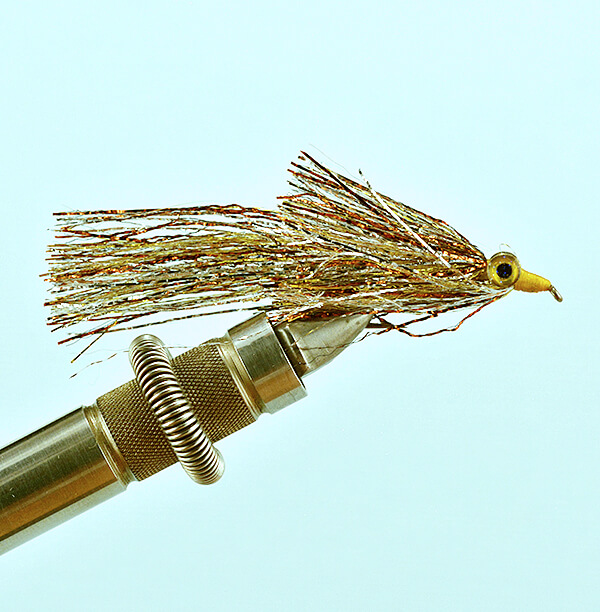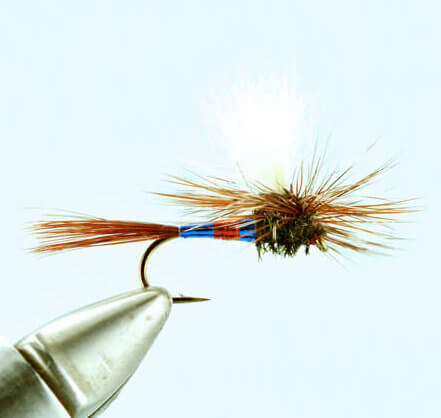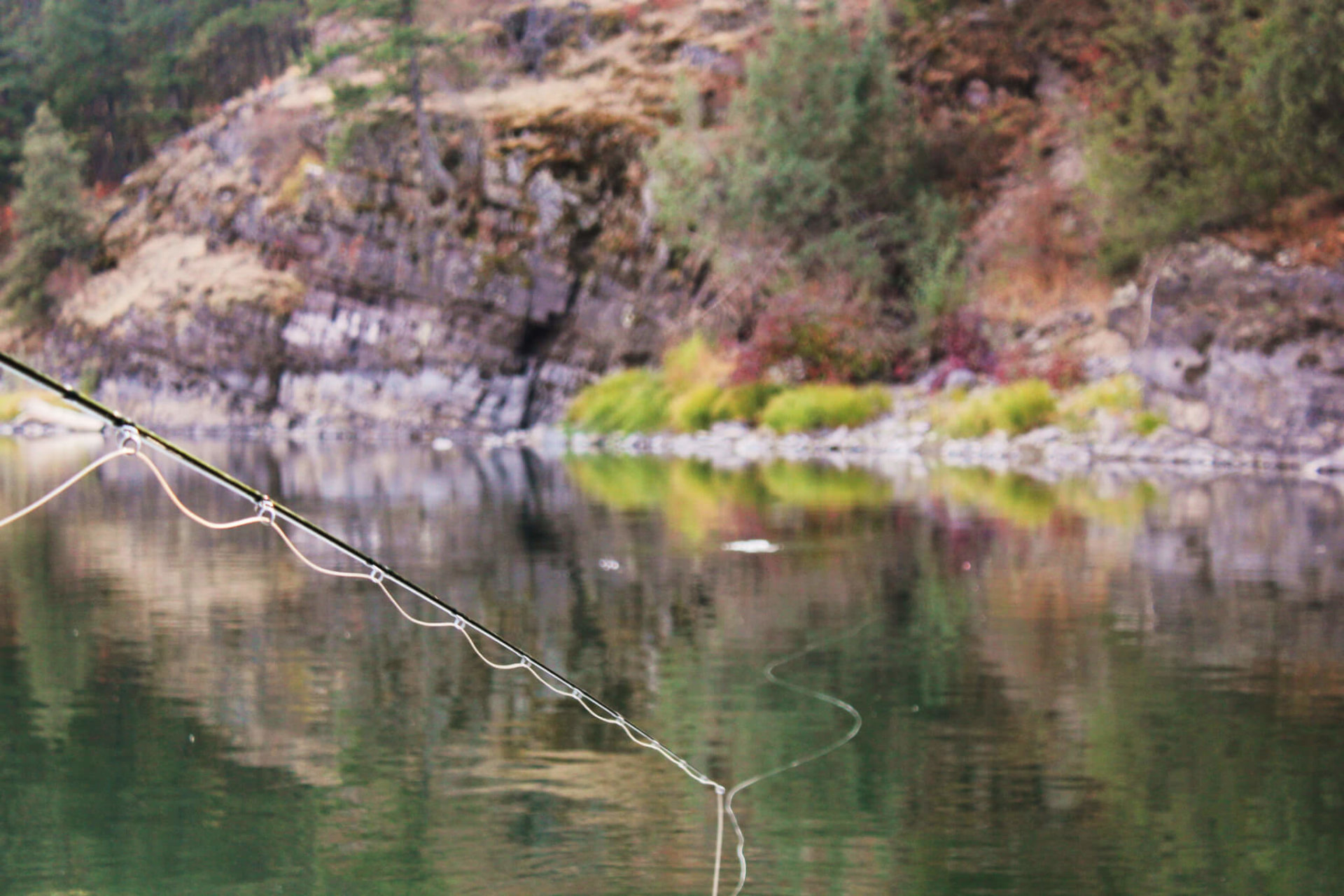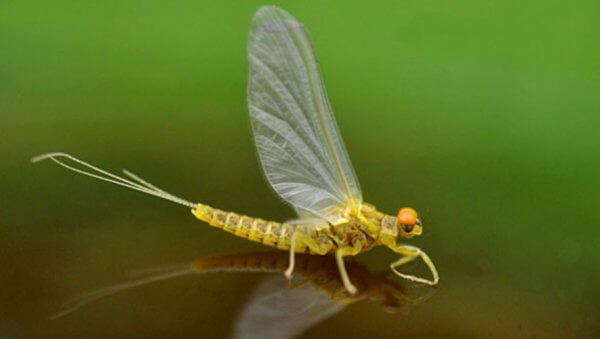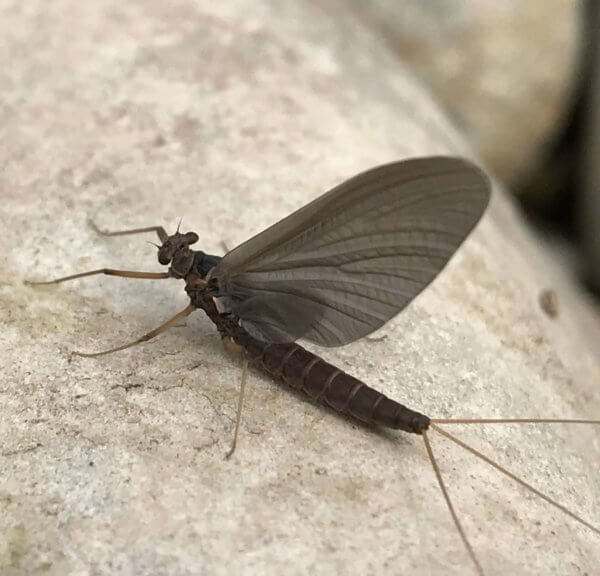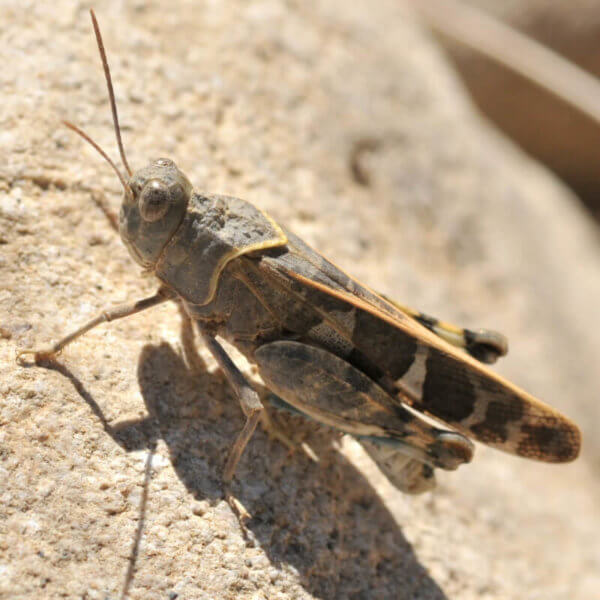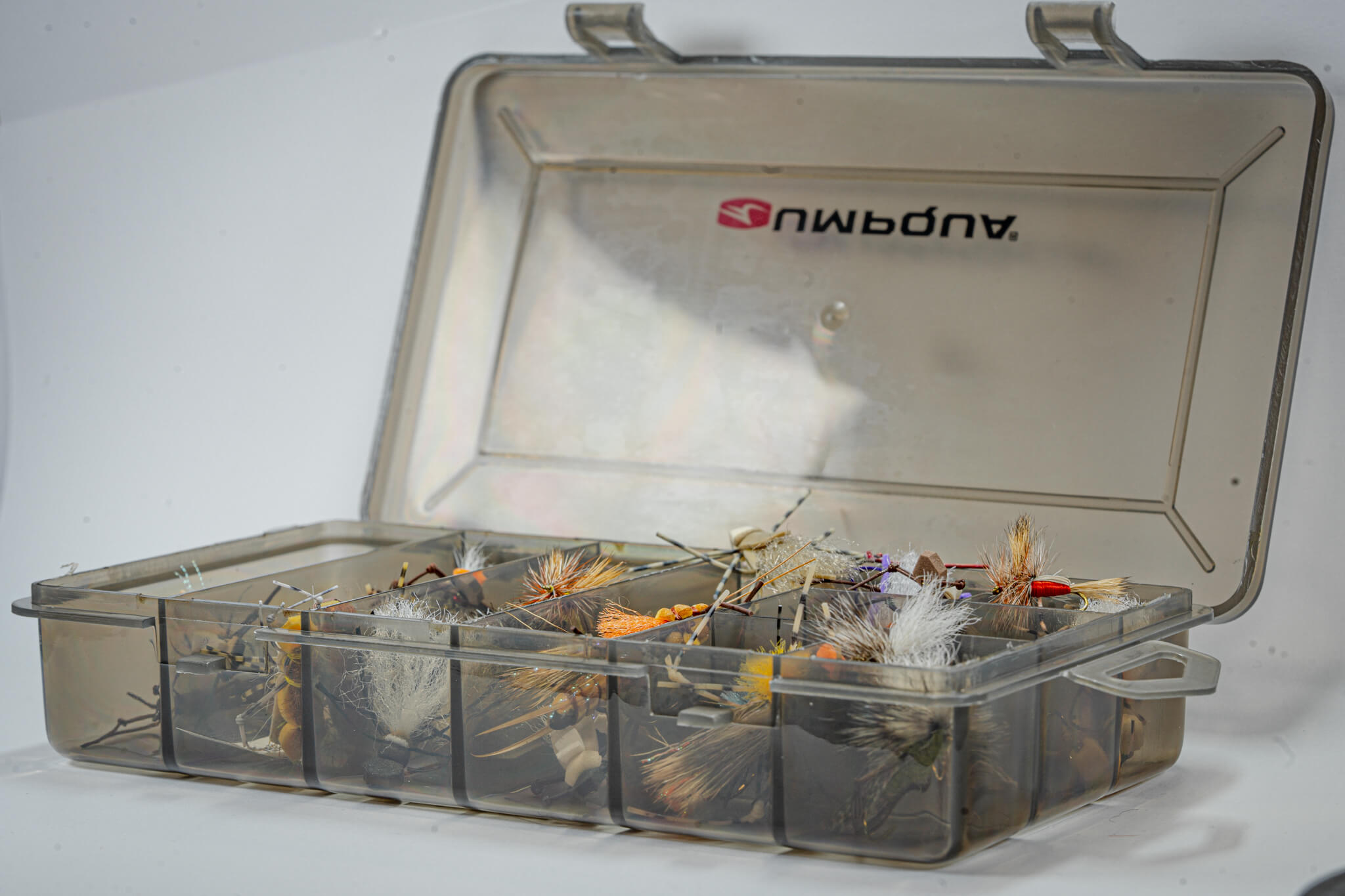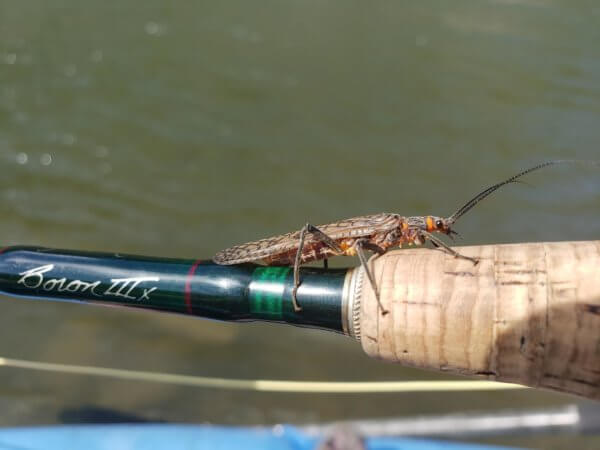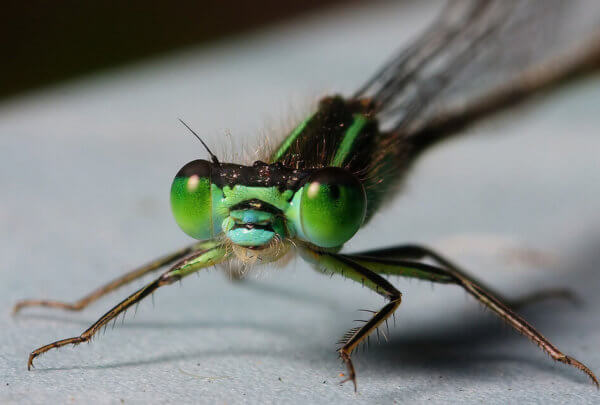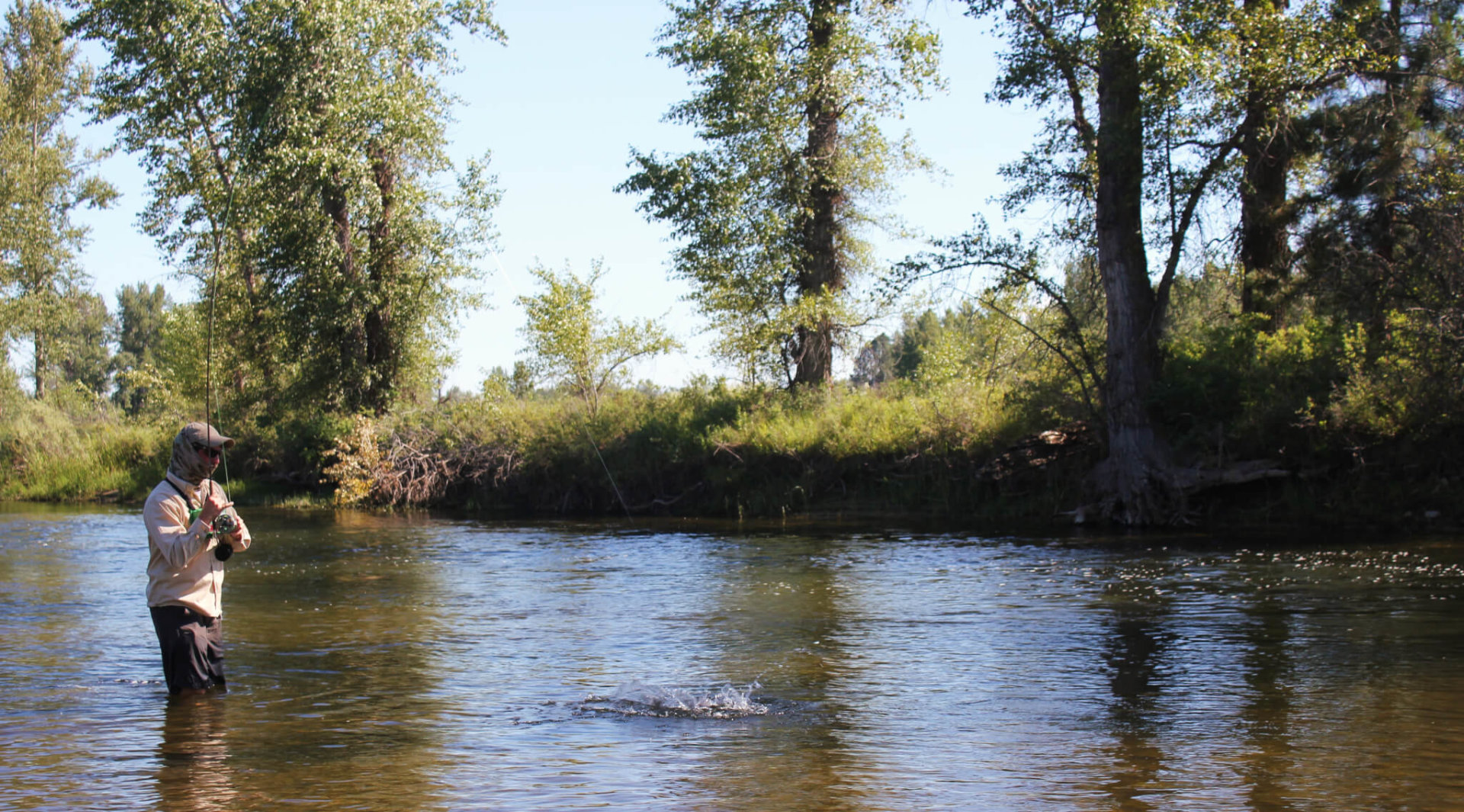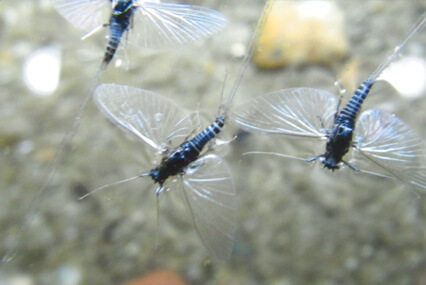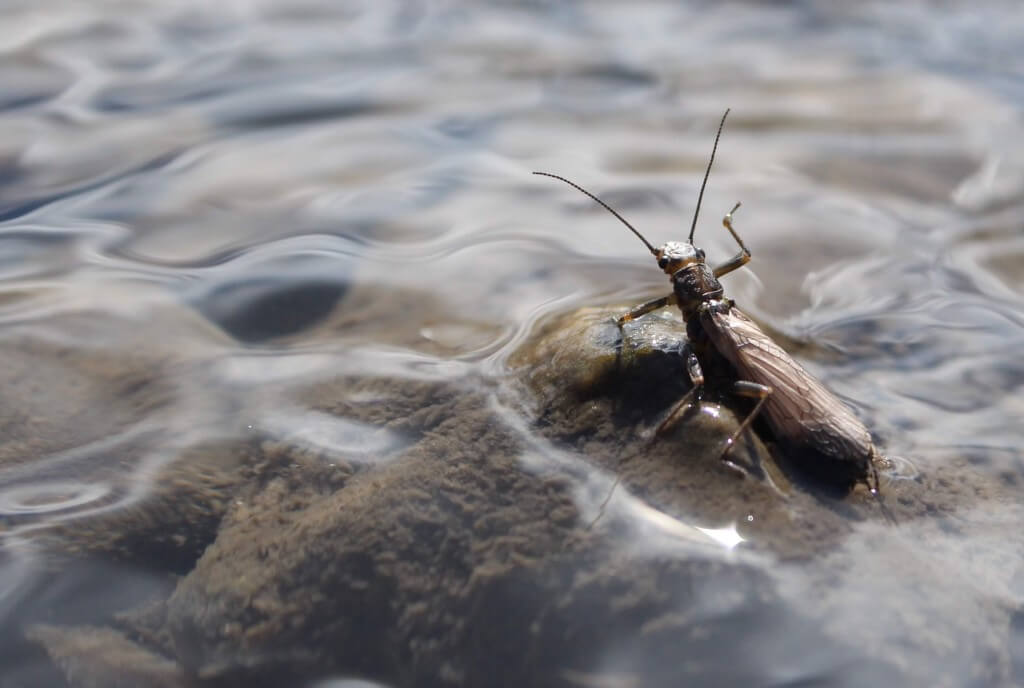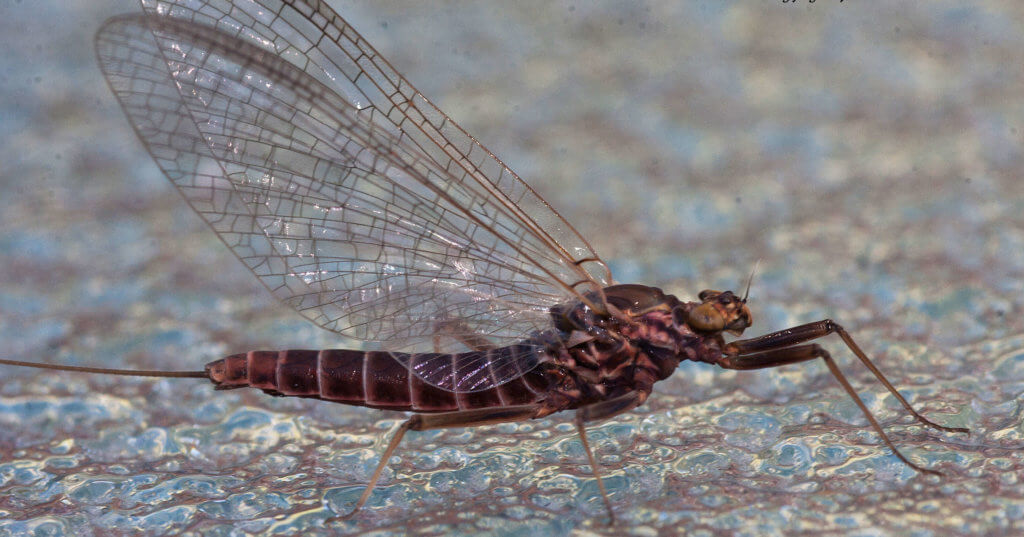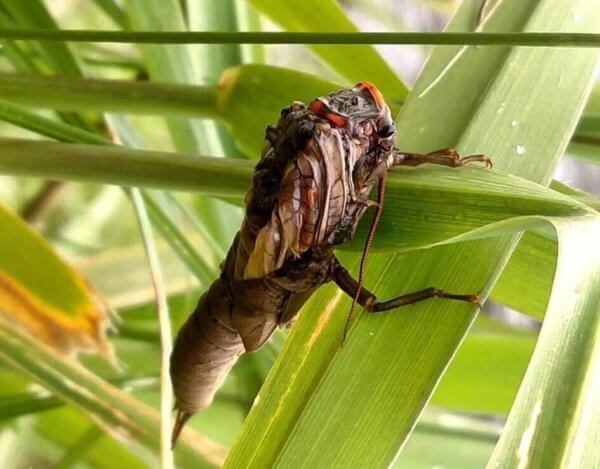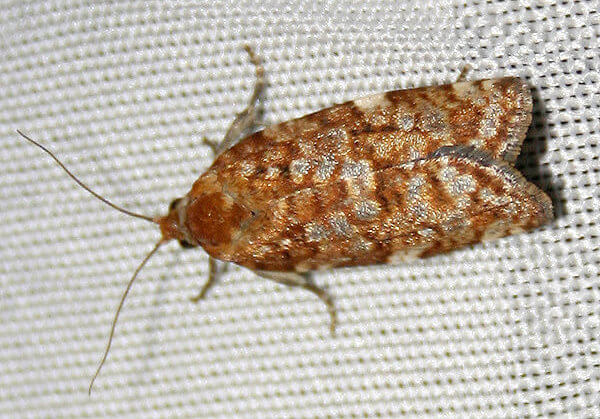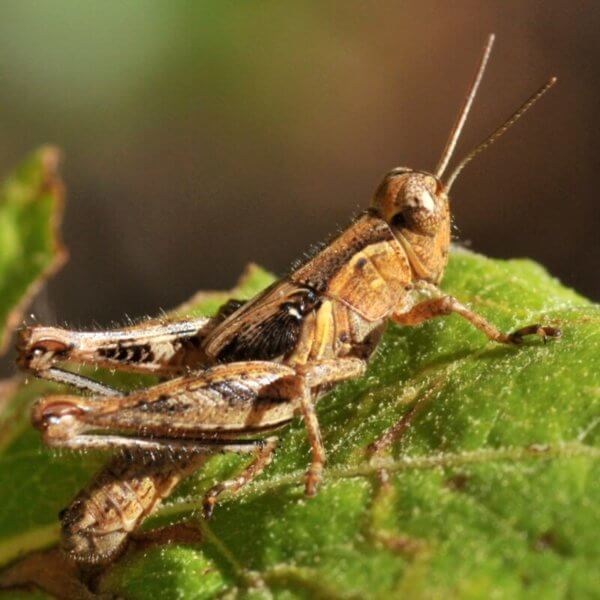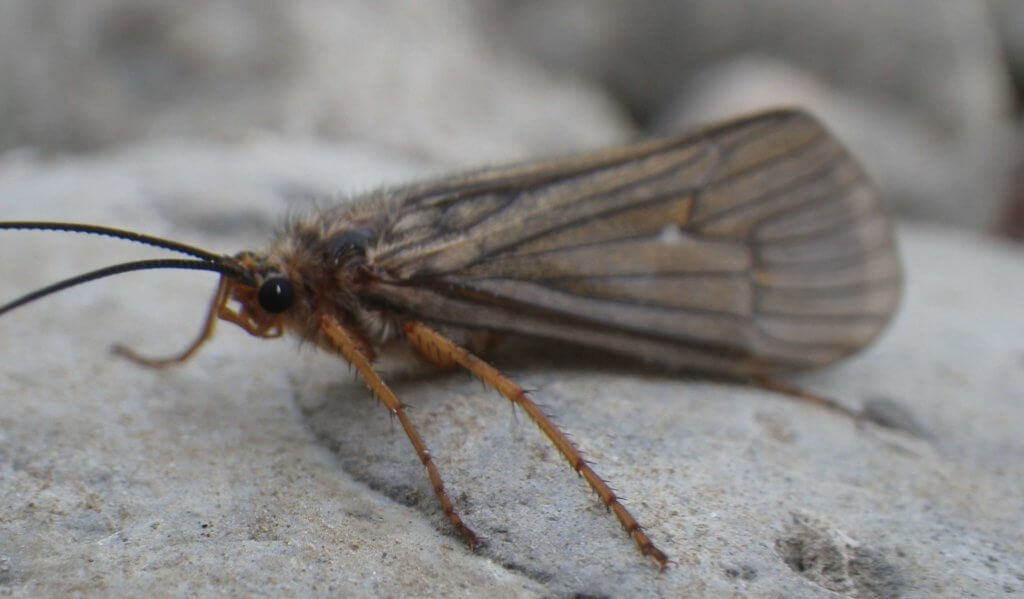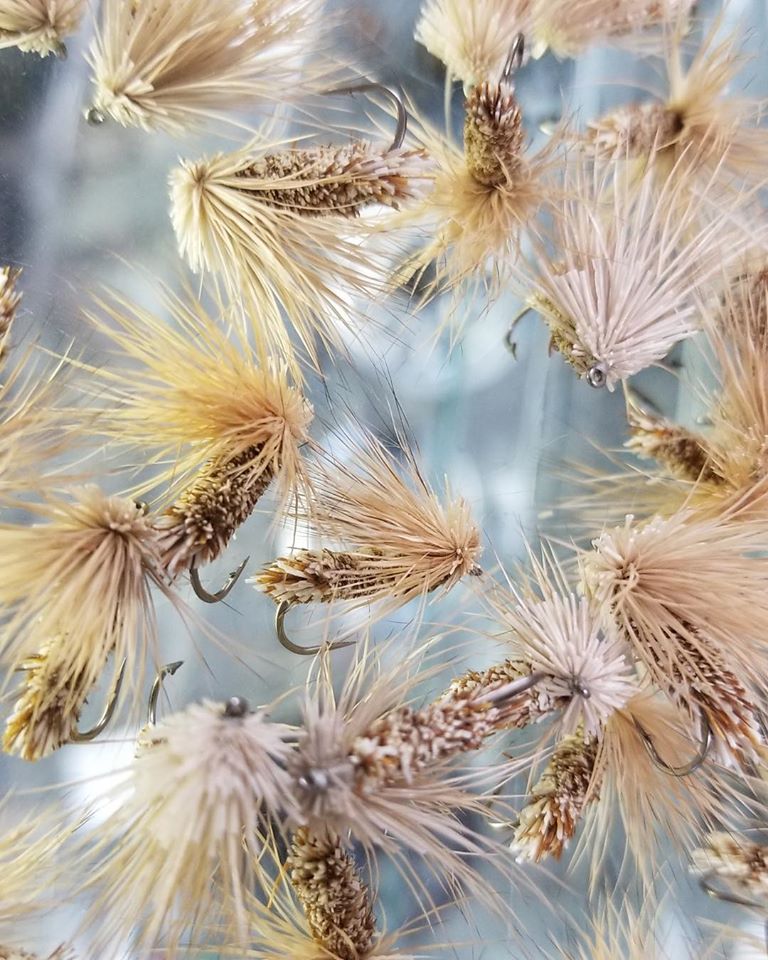CDC is used in some of our favorite flies, as pictured above. The Last Chance Cripple, Rastaman Stonefly and Hi-Viz Spinner all utilize CDC, and are amongst our best fish takers. CDC’s unique properties adds an almost irreproducible fish attraction. Yet we hesitate to recommend these flies. If an angler doesn’t know how to use CDC flies, their effectiveness can be ruined before the first cast. This sounds odd, but CDC’s performance can be eliminated with floatant.
CDC stands for Cul De Canard, which freely translates to duck’s bottom. CDC feathers are found surrounding a duck’s (or goose’s) preen gland. The preen gland secretes an oil waterfowl use to waterproof their feathers. CDC feathers evolved to maintain shape when the oil is secreted, which preserves insulative properties without “waterlogging”.
As the photo shows, CDC is fluffy. Like all feathers, CDC has a stem with barbs coming off the stem. What makes CDC unique is the barbs extending from the stem also have barbs, and depending on the size, those barbs have barbs as well. When used in a fly, all those little tendrils trap air bubbles.
Why CDC Works
When Gary LaFontaine researched his books, he didn’t rely on empirical evidence. He donned a scuba tank, and went subsurface to watch the naturals and his flies. In his seminal work, Caddisflies, LaFontaine studied emerging caddis pupa. Caddis pupa fill their exoskeleton with gas bubbles, which floats the pupa to the surface when emerging. The bubbles refract light, making the pupa look like a tiny, glowing ball during emergence. To mimic that characteristic, Gary pioneered the use of Antron. Antron is a trilobal material (Antron fibers are extruded in a triangular shape) working as a prism, refracting light just as the natural pupa refracts light via gas bubbles.
Gary didn’t just see caddis pupa. He also observed when insect wings are flush to the surface (such as spinners, cripples, drowned stoneflies and caddis), air bubbles are trapped under the wings. Light refracts through the trapped air bubbles just as in the caddis pupa, creating the distinctive light pattern. A spent wing, whether a spinner or a cripple, telegraphs to the trout, here’s an insect trapped in the surface film and unable to escape.
When a dry CDC feather contacts water, the microfibers trap air bubbles, refracting light like a natural. The critical point is the feather must be dry. This is where CDC becomes a bit tricky to use. When many anglers “gink” their fly, they use enough floatant to drown any dry, especially in hot weather when gel floatants liquify.
How To Properly Dress a CDC Dry Fly
CDC feathers will matt (absorb enough water to lose their shape), if enough liquid is applied. Despite CDC feather evolution, enough moisture drowns the feather. Using too much gink matts the fibers and you can’t get it out, ruining the fly for the moment. The fly isn’t permanently ruined-washing with soap and water restores the CDC to it’s fuzzy original shape. Water also soak CDC feathers over time, but it evaporates- more on that later.
After the initial floatant is applied, CDC feathers should look exactly the same as they did before floatant application. Fly-Agra and High N Dry’s Liquid Floatant are great for CDC. A quick dip, and then false cast the excess off. CDC feathers don’t benefit from pre-dipping in liquid floatants- the micro fibers retain too much floatant, and won’t hold air bubbles. Liquid floatants must be cast off. Loon Lochsa is a gel-style floatant designed for CDC use, and won’t matt the feathers when applied properly. It has the added benefit of working on standard dries, so while a bit more expensive, Lochsa replaces the gink bottle. One less thing to carry, which is a good thing.
Floatants are a relatively modern invention, and anglers LOVE them! Missoula’s best fly fishing guides carry 3-4 different floatants, each having a specific purpose and usage. Anglers getting into CDC, as well as many others, buy Lochsa and continue to carry Gink. Embarrassingly, a quick survey of this blog writers flotant pocket showed Fly-Agra, Gink, Umpqua’s EZ Dry, Lochsa and two bottles of Frog’s Fanny.
When using CDC flies, you want a desiccant style floatant, like Frog’s Fanny, Shimizaki or High N Dry Powdered Floatant. No matter how well CDC feathers are initially treated, during use CDC absorbs water and soaks down to nothing. This nullifies CDC’s ability to hold air bubbles, which is why we use it. The best way to resuscitate matted CDC feathers are desiccants. Dessicants bring CDC back to life. Prior to desiccants, old school anglers carried amadou or a small chamois. If those are not available, at worst you just blow on the fly till the CDC fluffs back up. Yes, this blog writer has done that. Damn near hyperventilated in the middle of the hatch, when I HAD THE FLY. I hope everyone has that feeling at least once- to be in the right place at the right time with the right fly. It’s indescribable.
That fly was a Last Chance Cripple, a go-to for many of the best fly fishing guides in Missoula, and across the Rocky Mountains. Developed on the Henry’s Fork by the Harrop family, the Last Chance Cripple combines CDC with the classic Quigley cripple shape to take the fussiest trout. Big trout focus on cripples. Cripples often have a wing trapped in the water. The wing traps air bubbles, refracting light. Exactly like the air bubbles trapped in CDC. To this blog writer, that makes CDC worth learning how to use.
It’s a fussy feather. You need to recognize flies with CDC, so it’s treated correctly. CDC is found in many more flies than mentioned here. You’ll end up with multiple floatants to coat and then rejuvenate the feathers. CDC takes more on water maintenance, and maybe a more organized way to carry your flies! Segregation has bad connotations, but it may apply to CDC flies.
Sub-Surface CDC
With the advent of the Tungsten Jig style flies, CDC is being used in new ways. Because the fibers are easily torn, and look good after they’re shortened, CDC feathers are being used to collar many jig nymphs, like the Duracell, the Umpqua PT Jig, the Tungsten Yellow Spot Jig and many others. With only 1-2 wraps, the fibers don’t trap enough air to hinder sinking when first tied on, and once saturated, the CDC works like any soft hackle.
This is where CDC knowledge comes in handy. When a CDC hackled nymph is initially tied on, the fibers hold air bubbles, which is realistic to the trout. The collar adds attraction till saturated, then it only provides motion. The crafty nympher casts his Perdigon 3-4 times, and then uses a desiccant to dry the fibers. It now holds air bubbles again, and returns to being an attractor and advantage. Make sure to use the wand on the desiccant cap to dust the CDC hackle only. (blatant sales pitch for Frog’s Fanny and Dry Dust). Applying floatant to the nymph body inhibits sink rate.
Do anglers do this all the time? No, not really. Most of the time, it’s not necessary. But there are days when you need every advantage you can find just to get a trout to open its mouth. That’s when knowing about CDC wet fly hackle can be utilized to your advantage. It’s like all knowledge- it doesn’t have to be used all the time, but good to have. Knowledge is power- it’s why we write these blogs!
Direct Hype for Frog’s Fanny
This blog writer, and some of Missoula’s fly fishing guides, favor Frog’s Fanny as their desiccant. Too many fish have been hooked on the first cast after applying Frog’s Fanny to be ignored, both dry and nymph. It brings feathers, especially CDC, back to life after saturation, and adds a little sparkle. It’s no knock on the other desiccants- they do exactly as advertised and remove the moisture. Frog’s Fanny seems to have a little bit extra going for it. It’s an opinion, but it’s backed up by lots of empirical evidence … and no hard facts! Take it for what it’s worth.
Once you recognize and know how to use CDC on the water, it becomes a staple in your fly box. CDC’s fish attraction far outweighs the fussiness of the feather. It’s why the Harrop’s use it on the Henry’s Fork, one of the world’s most demanding rivers. It moves fish- easy ones and difficult ones. Once you understand the care and feeding of CDC, you’ll wonder why it took so long to start using it.
